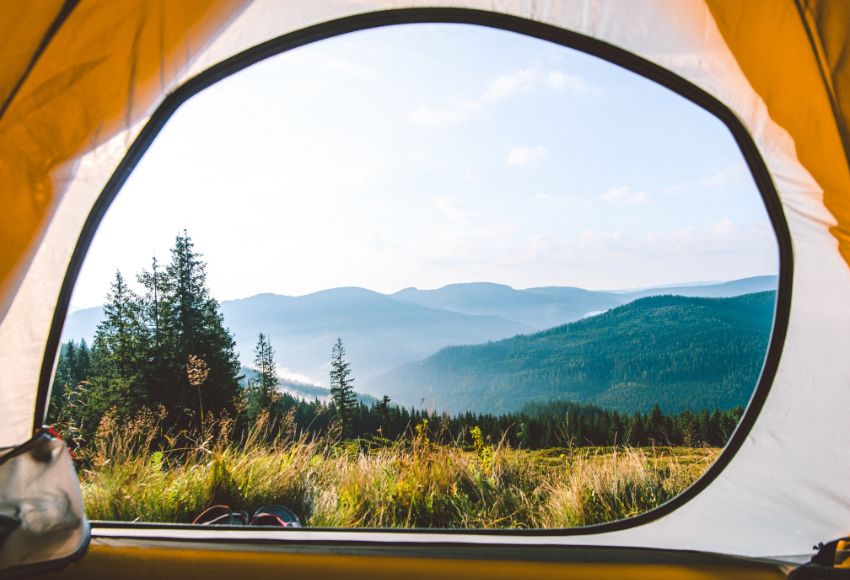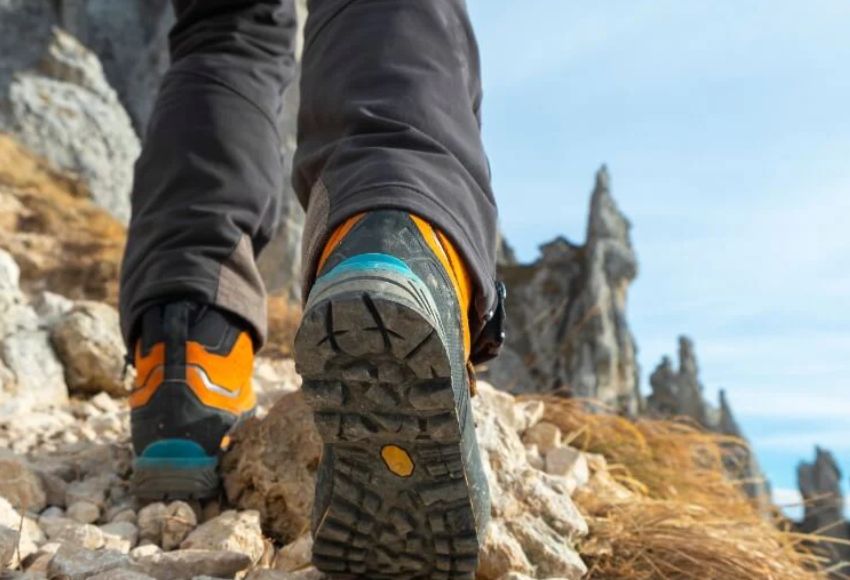Where, with what and how to survive a night under the stars - with comfort and respect for nature
Bivouac. A word that carries adventure, romance, but also dew drops on a sleeping bag, rolling on a slope and sometimes even a drop of fear from what rustles in the bushes. And yet – or precisely because of that – a night under the stars remains one of the most authentic experiences you can have in nature .
A night under the stars that isn't about survival
In this article, we will show you how to build a bivouac so that it is:
- safe,
- comfortable,
- inconspicuous,
-
and respecting the rules of nature and law.
Where to set up a bivouac (and where not to)
Choosing a location is absolutely essential. It can make the difference between a good night's sleep or a night filled with cold, water, or unpleasant terrain.
Ideal place:
-
Flat, dry, slightly elevated (due to rain)
-
Windy , but not in the valley where the cold lingers
-
A short distance from the water , but not directly on the shore (dew, cold, insects, animals)
- Far enough away from roads and huts
-
Under trees with strong branches (shade, protection from dew)
Avoid places:
- In saddles and passes (draft)
- Directly under rocks or loose stones (risk of falling)
- In stream beds (even when they are dry)
- In places with fresh animal tracks
-
In strictly protected areas (see below)

Legal and ethical aspects of bivouac
In the Czech Republic and Slovakia, camping in nature is restricted , but bivouacing for one night (without building a tent, discreetly and without leaving any traces) is tolerated - if:
- you respect protected areas (e.g. NP, PLA – various conditions),
- you don't start a fire,
- you don't leave any trash behind,
- you do not disturb the surroundings with noise or light.
The golden rule of bivouac: "Stay unseen, unknown, and don't forget to clean up more than you brought."
Bivouac equipment – what you need to sleep well
A quality bivouac doesn't require a tent costing ten thousand. It's more about a combination of simple equipment and common sense.
Basic equipment:
|
Category
|
Recommended solution
|
|
Sleeping bag
|
3-season, with DWR moisture-repellent treatment
|
|
Sleeping mat
|
foam (e.g. Z-lite) for heat insulation and a light inflatable sleeping pad over it, or an inflatable one with insulation
|
|
Bivouac bag (bivy bag, sleeping bag)
|
protects the sleeping bag from wind and dew
|
|
Tarp/sheet
|
rain shelter, leeward shelter
|
|
Scarf or buff
|
universal – hat, sleeping bag cover, mosquito mask
|
|
Headlamp
|
with a red light so you don't disturb the surroundings
|
How to build a bivouac – several options
Option 1: Minimalist bivy
-
For: dry weather, summer, more experienced user
-
How: sleeping bag + sleeping pad + bivy bag
-
Pros: speed, light weight
-
Cons: no rain cover
Option 2: Tarp + bivy
-
For: changeable weather, multi-day expeditions
-
How: tarp shelter (type A, diamond, lean-to) + sleeping bag in a bivouac
-
Advantage: protects against rain and wind
-
Tip: use trekking poles or branches as a structure
Option 3: Hammock + tarp
-
For: forest terrain, easy uphill
-
How: a hammock with a mosquito net hung between trees, a tarp above it
-
Pros: comfortable sleep without uneven terrain
-
Disadvantage: requires trees + insulation from below
Practical tricks and tips from the field![]()
-
Always look up. A dry tree can fall. A loose branch can fall too.
-
Place aluminum foil under your sleeping bag. It insulates well and protects against moisture.
-
Dry the sleeping bag in the morning. The dew will also penetrate the bivouac - shake it out and dry it in the sun.
-
Use things as ballast. A backpack on the corners of the sail, rocks on the leeward side.
-
Sleep with your head elevated. Minimizes reflux, improves airflow.
-
Less light, more peace. Don't use strong LEDs at night - red light is enough.
 How to pack a bivouac setup – efficiently and UL
How to pack a bivouac setup – efficiently and UL
The bivouac style is ideal for an ultralight approach . All you need is:
|
Thing
|
Weight (approx.)
|
|
Bivouac bag
|
300–500g
|
|
Tarp
|
300–600g
|
|
Sleeping bag (summer)
|
600–900g
|
|
Sleeping mat
|
250–500g
|
|
Total
|
~1.5–2.5 kg
|
A combination that fits into a 10l bag and still keeps you dry and warm.
Where to go bivouac in our country or in Slovakia?
Add suitable routes from our application
The magic of bivouac: why it's worth it
- You fall asleep under the stars. With no obstacle between you and the sky.
- You hear the forest – birds, wind, rustling.
-
In the morning you wake up in the fog, into silence, into a world without borders.
A bivouac is not just an emergency overnight stay. It is an experience that connects you with nature. It teaches you to appreciate simple things – warmth, shade, dryness, light. And most importantly: it teaches you to trust yourself .
[/lock]

Odemkni celý Adventurer magazín.
Všechny články, návody, rozhovory, aktuality i příběhy ze světa outdooru bez omezení. Součástí je i premium verze aplikace Adventurer, která slouží pro plánování outdoorových výletů. Najdeš zde tisíce tras a výšlapů. Odemkni si dveře do nekonečného světa dobrodružství.
Přístup ke všem článkům z našeho online magazínu
Prémiový obsah z podcastů s ikonami ze světa outdooru a minidokumentů z výprav
Získáš slevy až 30 % na vybavení a jídla od našich partnerů
Nahrávání tras & GPS nástroje s grafem převýšení
Můžeš si do apky přidávat vlastní trasy a organizovat výlety
Rezervace ubytování a cestovní pojištění
Navigace bez datového připojení - offline mapy
Budeš mít k dispozici databázi vícedenních výletů a itinerářů
Dostaneš přístup k alternativním trasám
Export GPX - nahraj si trasy do hodinek a šetři baterku
Odemkne se ti více druhů map a překryvy map s aktuálním počasím
Aplikace bez reklam - cestuj a plánuj nerušeně








Leave a comment
All comments are moderated before being published.
This site is protected by hCaptcha and the hCaptcha Privacy Policy and Terms of Service apply.